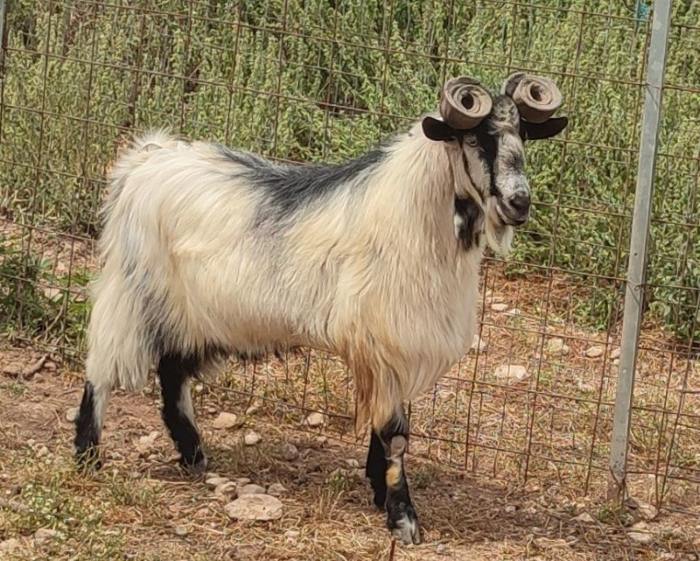

It’s a goat with a history deeply rooted in Greece’s ancient past, still roving through a handful of the country’s regions. Ulokeros goat, related to Greek mythology and ancient Greece and gifted with unique characteristics, tops an informal list of Indigenous breeds on the brink of extinction across the country despite breeding efforts aiming to save this mysterious animal.
Vasilis Lekkas, a researcher with “Amalthia,” a network for preserving Greek Indigenous farm animals and part of the international network SAVE Foundation, recently discovered the first complete study on the ulokeros goat. Written in the 1930s by Professor I.N. Dimitriadis, this 22-page study had remained unknown for decades until it was found in a scientific library in Zurich. Through the SAVE Foundation, this pre-war study, which describes the authentic characteristics of the unique ulokeros goat, has now been brought to Greece.
“The study of Professor Nikolaidis gave us the ability to choose between the remaining goats which were the genuine ulokeros goats and which had undergone genetic modifications,” Lekkas says.
The animal owes its uniqueness primarily to its curved horns, from which it derives its name—”ulos” in ancient Greek means curved, and “keros” means horn. At the beginning of the 20th century, according to Professor Nikolaidis’ study, it was roaming the regions of Viotia and Fthiotida in central Greece. Today, the number has dramatically decreased, totaling about 200 individuals. Most remain in the previously-mentioned regions, famed for their biodiversity and clean environment.
According to data provided by Lekkas, the largest herd of ulokeros goats consists of 100 females and 30 males, while two smaller herds consist of 30 and 20 animals, respectively. Researchers note that for a goat breed to secure its future presence, it requires a population of 2,000 individuals.

The ulokeros have some unique characteristics, says Dr. Iosif Mpizelis, professor at the Agricultural University of Athens, who in 2021, authored the book “Greek Domestic Breeds: A Hidden Treasure.”
According to Dr. Mpizelis, Indigenous breeds like the ulokeros goat are characterized by resistance to diseases and parasites, the ability to survive with little water and food, resilience under adverse conditions, and able to settle in barren areas. They are easy to handle and produce products like meat and dairy of unique quality.
“It is an animal loaded with mystery, adventure, and obstacles,” says Lekkas. “The ulokeros goat draws a lot of attention, many want it but don’t know how to breed it. Universities don’t show the interest they should have been showing, neither does the state and it’s only a few individuals who today sustain it.”
Almost all breeding efforts occurred in parts of Greece other than Viotia and Fthiotida, despite Amathia’s assistance turned out fruitless.
“The study for the ulokeros goat and the preservation of the Indigenous genetic material in the country is urgent because of the dramatic decline of local goats and the increased import of foreign genetic material,” Amalthia notes. “Genetics in indigenous goats hasn’t been studied and the bibliography is almost non-existent. But today, there are new, modern techniques, like DNA analysis, which can help characterize local populations as breeds in order to preserve them.”
